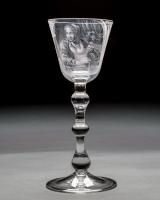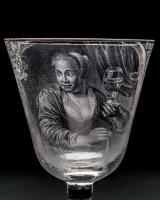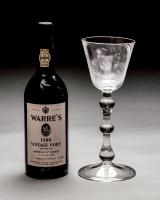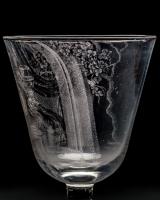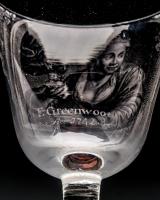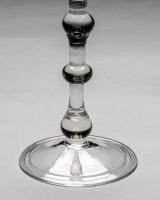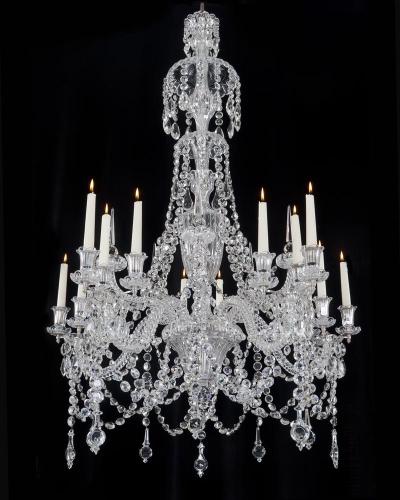
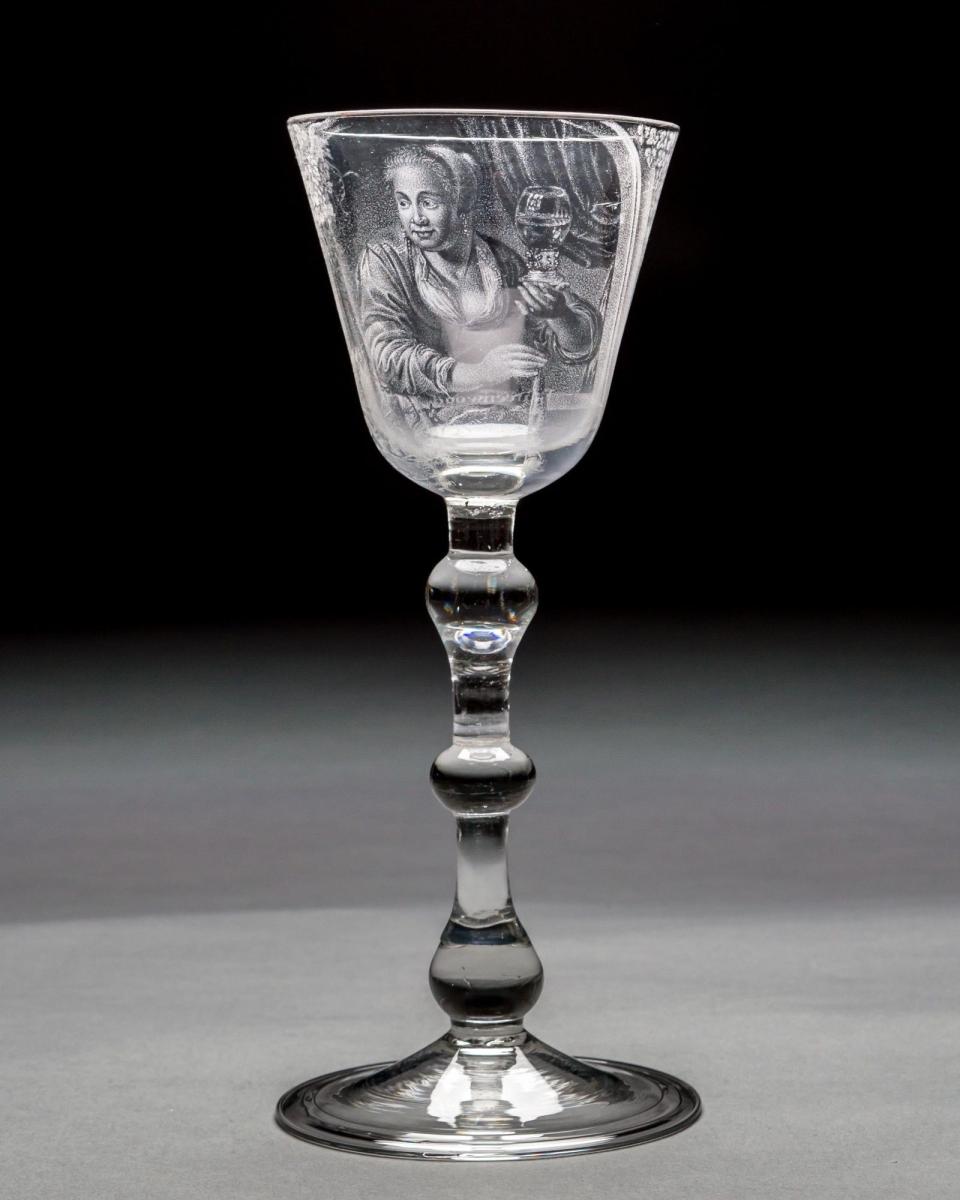
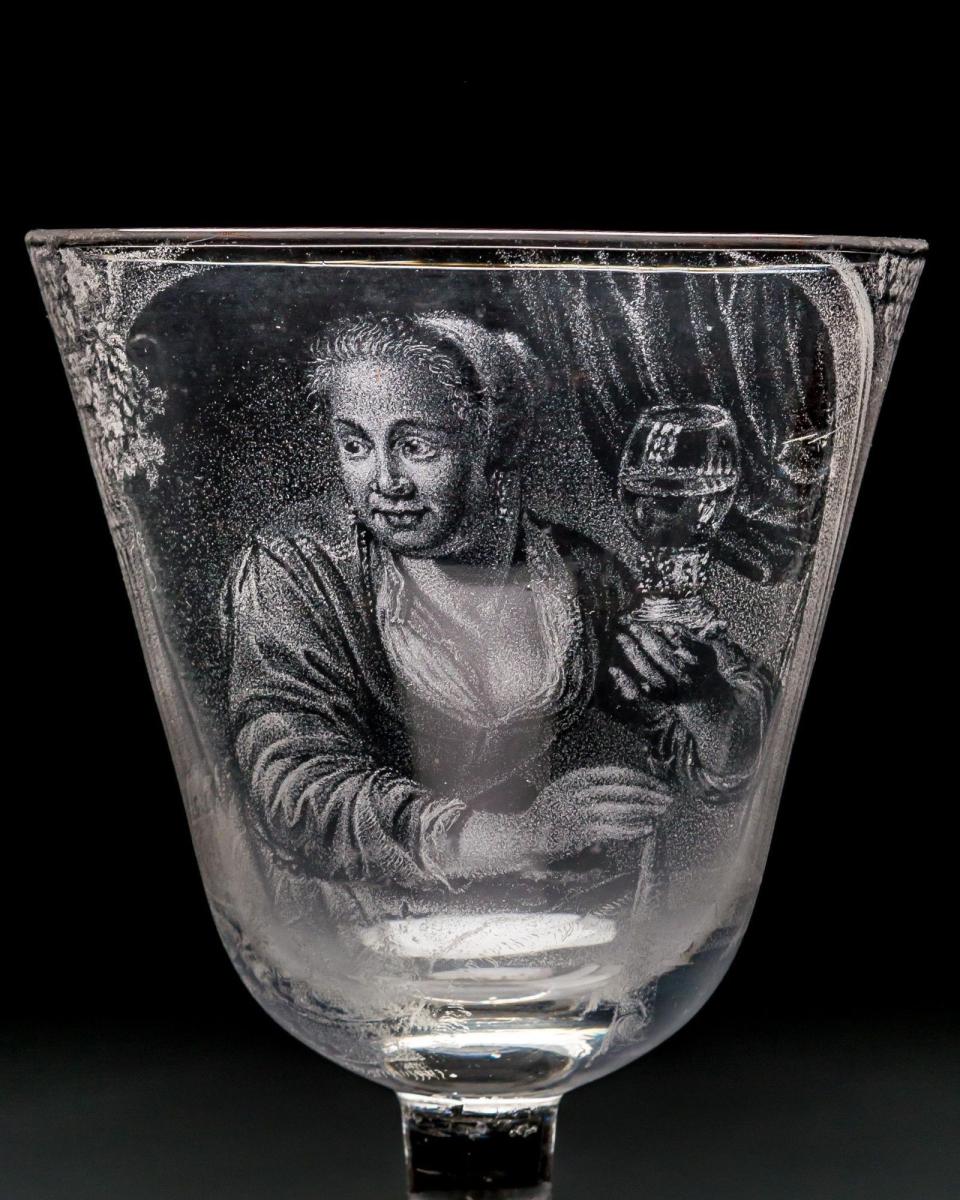
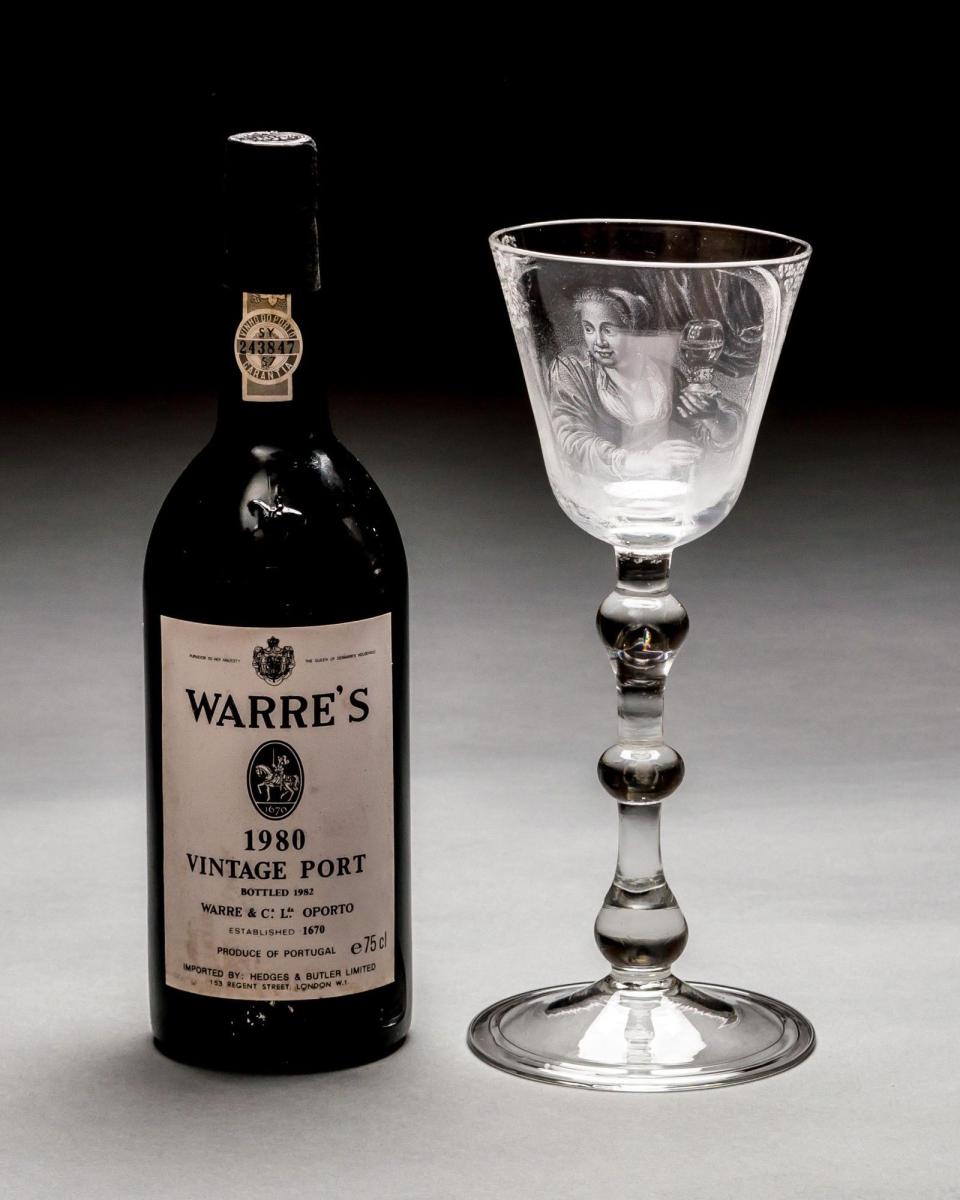
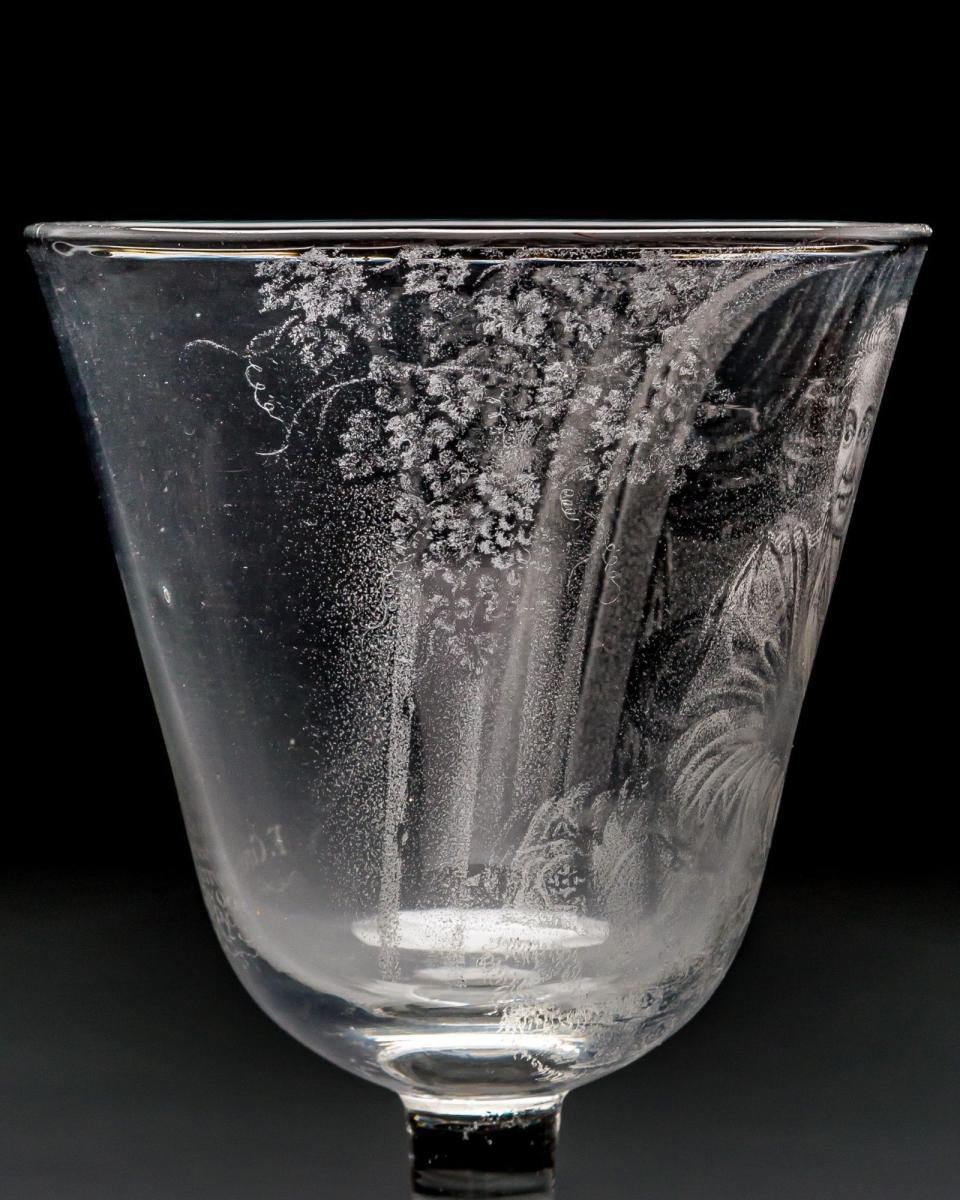
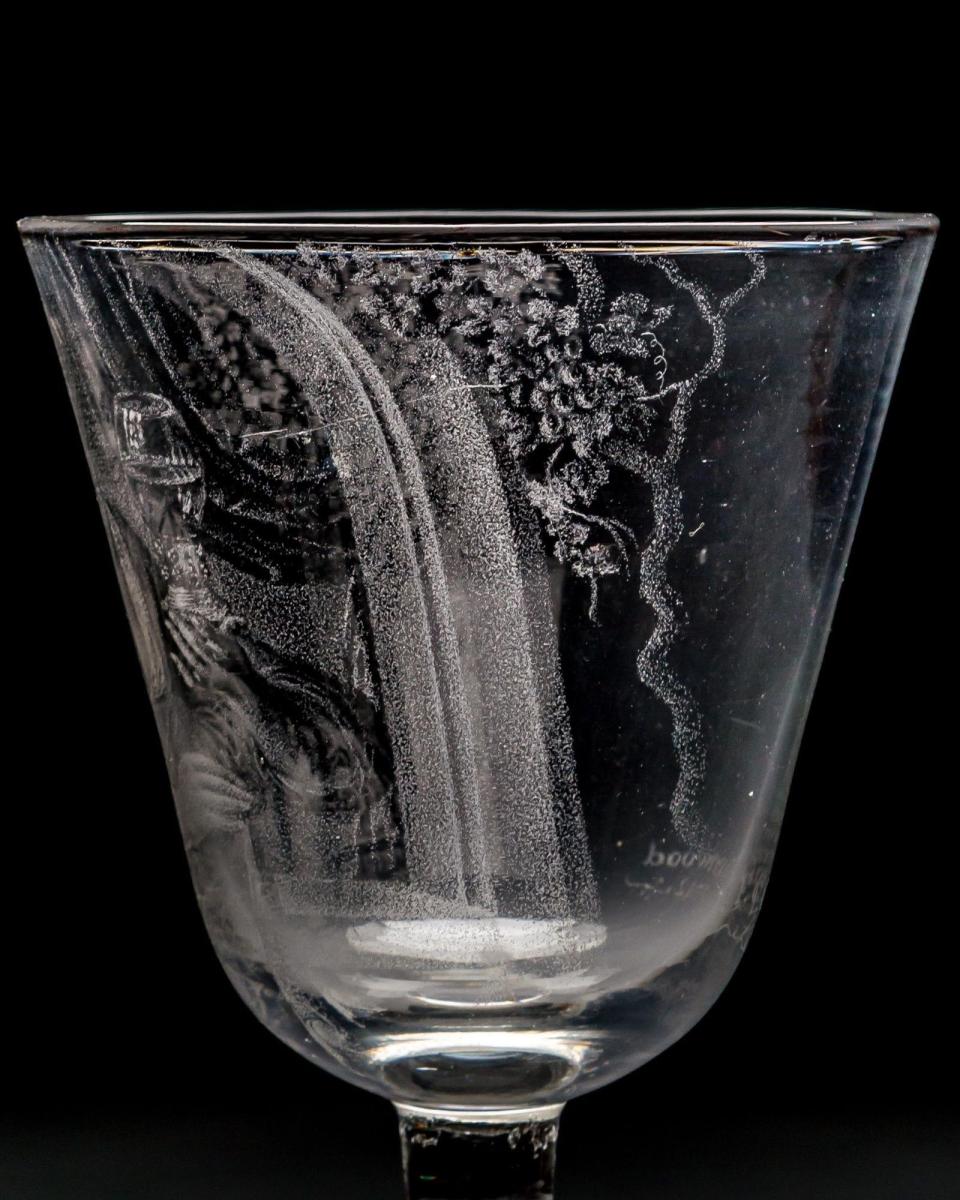
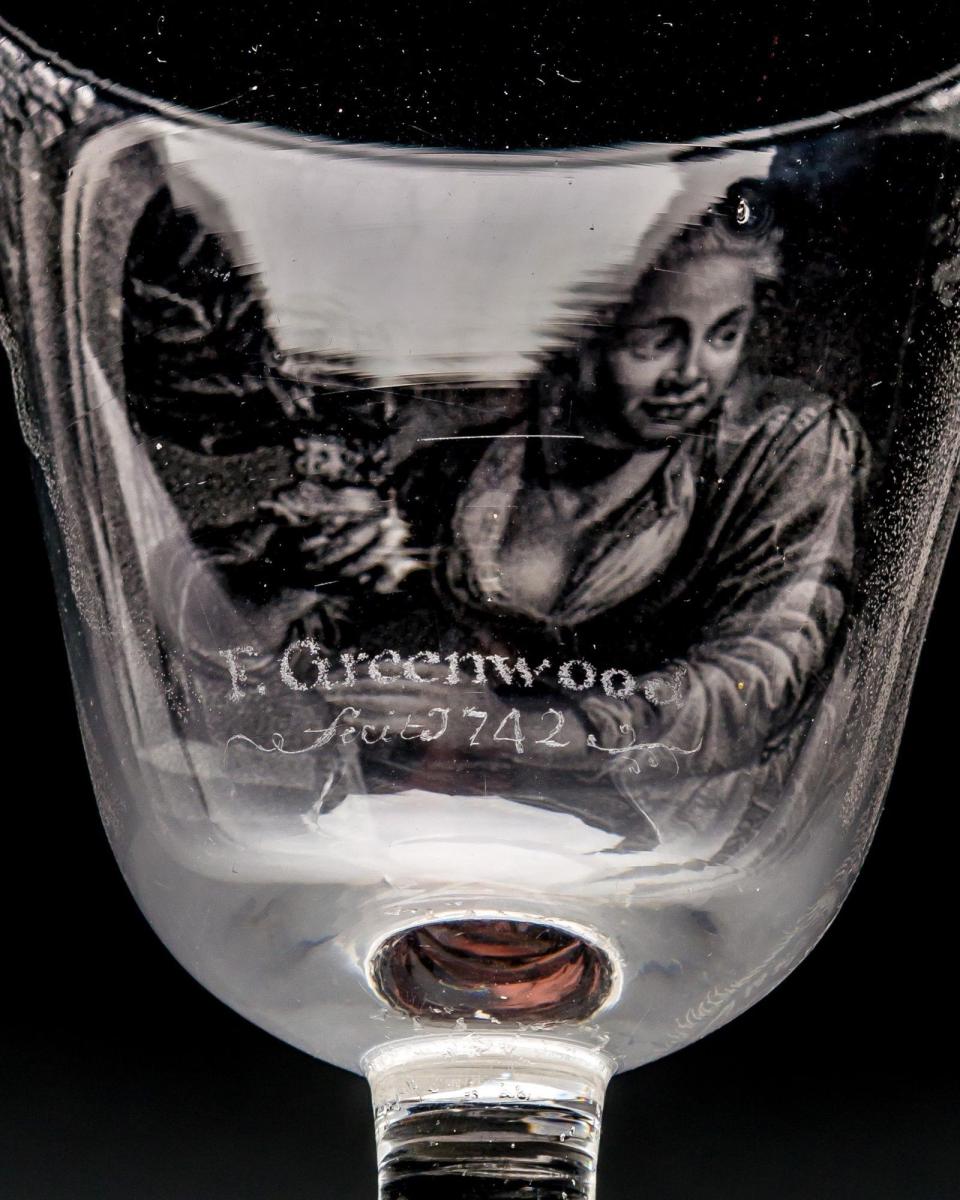
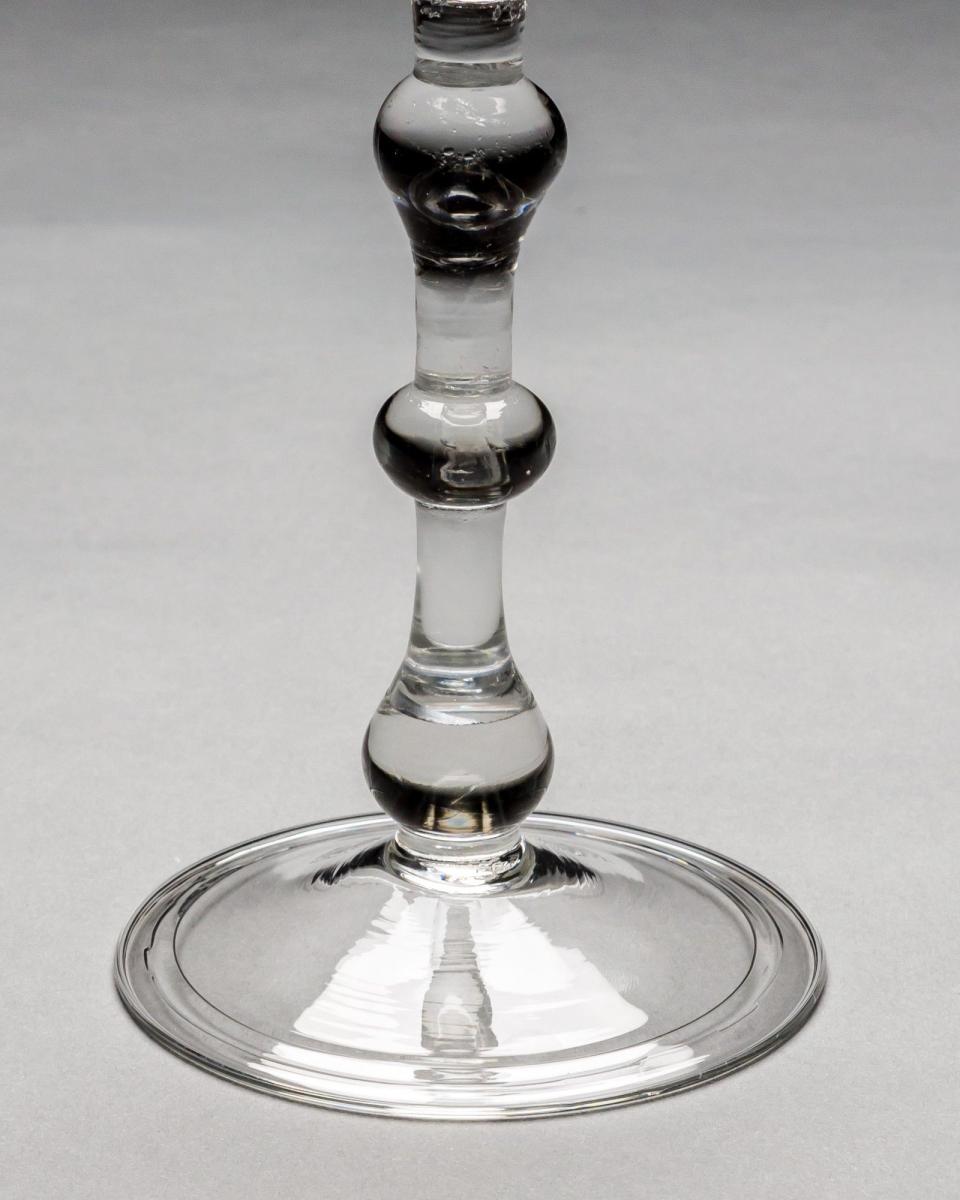
Price on application
This object is eligible for a Certificate of BADA Provenance
The BADA Standard
- Since 1918, BADA has been the leading association for the antiques and fine art trade
- Members are elected for their knowledge, integrity and quality of stock
- Our clients are protected by BADA’s code of conduct
- Our dealers’ membership is reviewed and renewed annually
- Bada.org is a non-profit site: clients deal directly with members and they pay no hidden fees
A Rare Documentary Stipple-Engraved Goblet Engraved by Frans Greenwood, Signed & Dated 1742.
The round funnel bowl stipple-engraved with a half-length portrait of a female herring saleswoman holding up in her left hand a half-full roemer, and with her right hand a herring by its tail. Sat in an arched window frame with fruiting vines flanking the sides, drapery in the background to the right and a table-cover draped over the sill. The reverse signed and dated in diamond-point F. Greenwood fecit 1742. The stem with an inverted baluster section above a knop, above a replacement lower section and foot, two scratches over the frame to the right of the roemer.
FRANS GREENWOOD (Rotterdam 1680-1763 Dordrecht) Frans Greenwood was the son of Francis Greenwood, merchant and Anna Glover, both of Yorkshire extraction. Greenwood was trained in Rotterdam to be a merchant and worked as such for some time. In 1720 he became a Customs and Excise Officer moving from Rotterdam to Dordrecht in 1726. He received revenue from a plantation in Surinam, of which he was part-owner. Greenwood took an active interest in literature and was a well-known poet in his day. He was the first to stipple a whole picture on glass. Greenwood's stippling technique greatly influenced other engravers in Dordrecht. His most important follower was Aert Schouman. Forty-three glasses signed by Greenwood are known, three of which are in the Rijksmuseum, Amsterdam (see P.C. Ritsema van Eck, Glass in the Rijksmuseum, vol. II, Zwolle, 1995, p.469 for a more extensive biography of Frans Greenwood) The subject is reminiscent of a fish-seller painted by Gerard Dou (1613-1675) (see W. Martin, 1902, Gerard Dou, No. 41). Greenwood referred to a goblet which he had engraved with een haringverkoopster (a herring saleswoman) with a poem inscription which perhaps was engraved on the foot, now lost; Een haring verkoopster Ô Zegenrijke visscherij Wat schaft ge ons jaarlijks lekkernij! Uw' haring, die geliefde visch Wekt eet en drinklust aan den dish (Oh, greatly blessed fishery what delicacies you provide each year! Your herring that beloved fish, whet's one's appetite for food and drink) This goblet may be the haringwijfje (herring wife) owned in the middle of the 18th century by bachelor Paul Schepers (one of the directors of the Dutch East India Company), Rotterdam, who bequeathed it in his testaments to his second cousin together with two other Greenwood glasses. F.G.A.M. Smit, Frans Greenwood (1680-1763), Dutch poet & glass engraver, Peterborough, 1988, p. 146. A. Edelstein, Art at Auction, the year at Sotheby Parke Bernet 1973-1974, London, 1974, p. 439. F. Greenwood, vervolg van F. Greenwood gedichten, Dordrecht 1760 for the poem on the missing foot.
Dimensions
Height 25.5 cm / 10 " Diameter 11 cm / 4 "Stock number
FA1061The BADA Standard
- Since 1918, BADA has been the leading association for the antiques and fine art trade
- Members are elected for their knowledge, integrity and quality of stock
- Our clients are protected by BADA’s code of conduct
- Our dealers’ membership is reviewed and renewed annually
- Bada.org is a non-profit site: clients deal directly with members and they pay no hidden fees


